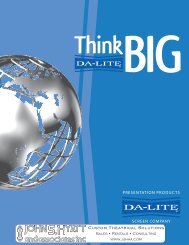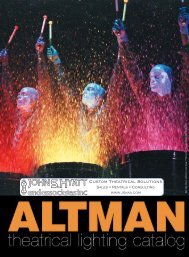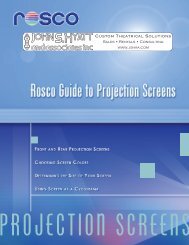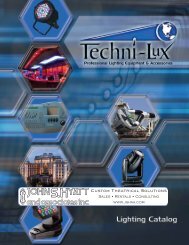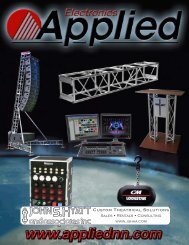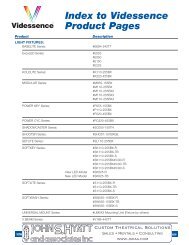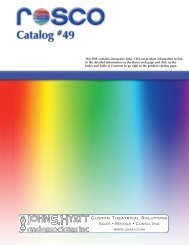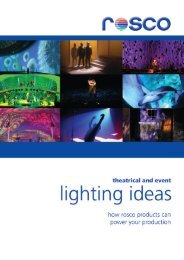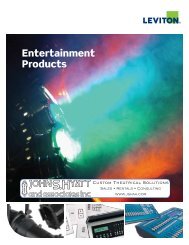Download a copy of "Filter Facts"
Download a copy of "Filter Facts"
Download a copy of "Filter Facts"
Create successful ePaper yourself
Turn your PDF publications into a flip-book with our unique Google optimized e-Paper software.
COLOR TEMPERATURE<br />
KELVIN COLOR TEMPERATURE (K)<br />
This is the scientific temperature scale used to designate the spectral output <strong>of</strong> a radiant element such as a lamp<br />
filament sufficiently heated so that it emits visible light. Such heated elements will then produce a continuous visible<br />
spectrum, with some output at all wavelengths. Examples include incandescent and tungsten sources, as well as<br />
natural daylight.<br />
Simply put, a lower kelvin temperature indicates a relatively higher amber output, while a higher kelvin temperature<br />
corresponds to a relatively higher blue output.<br />
CORRELATED COLOR TEMPERATURE (CCT)<br />
This is a term <strong>of</strong>ten applied to arc sources that do not employ a heated filament and thus do not produce a continuous<br />
visible spectrum. Examples include fluorescent lamps and industrial discharge lamps.<br />
For color correction purposes in film and electronic imaging, the manufacturer’s suggested Correlated Color<br />
Temperature <strong>of</strong> these sources should not be employed, unless the accompanying Color Rendering Index (CRI)<br />
exceeds a value <strong>of</strong> 90 (e.g. HMI or Electronic Strobe).<br />
COLOR TEMPERATURE AND MIRED SHIFT VALUE<br />
The kelvin color temperature scale is not the best method for predicting the effect <strong>of</strong> color correction filters. This<br />
is because the resulting kelvin temperature will vary, depending upon the kelvin temperature <strong>of</strong> the original source.<br />
For example, Half Blue will increase kelvin 900 degrees for a 3200K source, yet only 600 degrees for a 2600K<br />
source, and 1500 degrees for a 4000K source.<br />
Mired Shift Value is a constant value. It provides an accurate method for predicting the effect <strong>of</strong> a color correction<br />
filter regardless <strong>of</strong> the kelvin temperature <strong>of</strong> the original source. It also allows for predictable results when combining<br />
filters, since the mired shift values are additive or subtractive.<br />
Note: This process <strong>of</strong> calculating mired shift value is vastly simplified through the use <strong>of</strong> the Rosco <strong>Filter</strong><br />
Nomograph (pg. 8). In addition, Rosco <strong>of</strong>fers an easy to use, electronic calculator that determines either the<br />
required filter or the resulting kelvin from selected filters. Both the <strong>Filter</strong> Nomograph and the Electronic Calculator<br />
are available for free download at www.rosco.com.<br />
6



